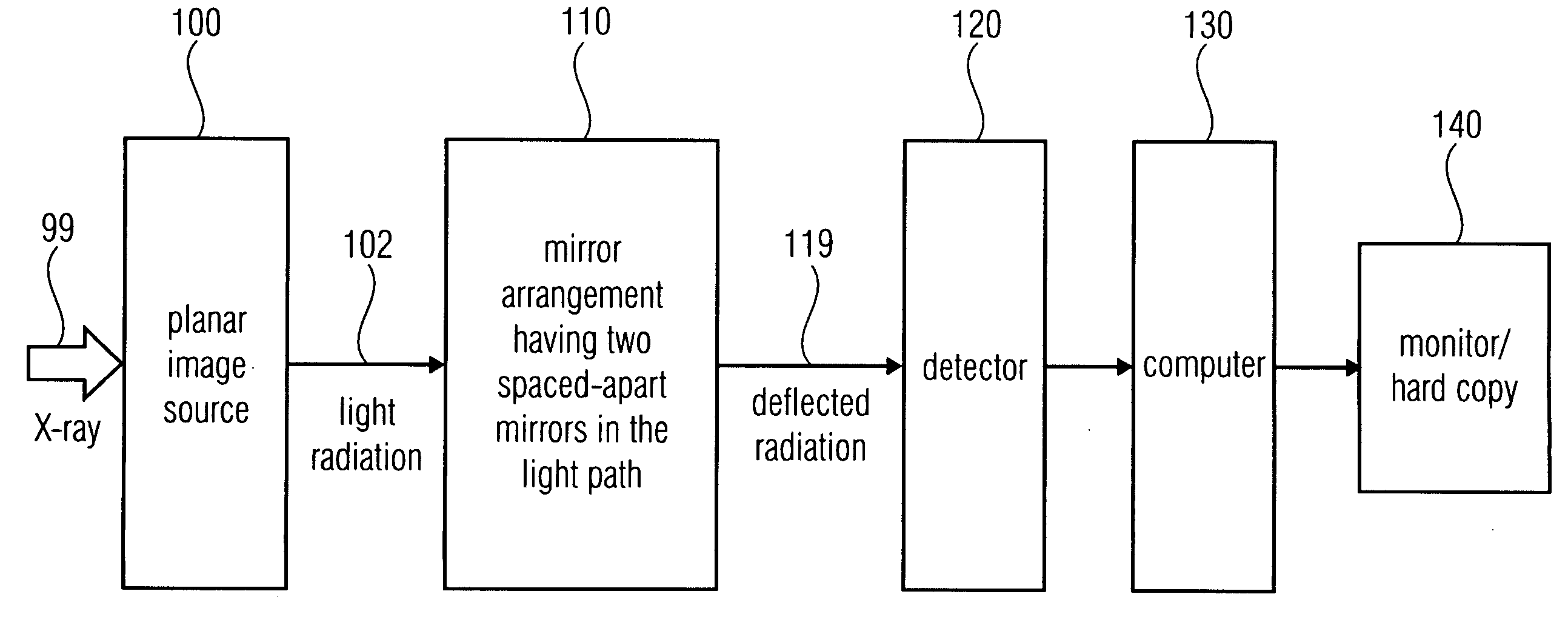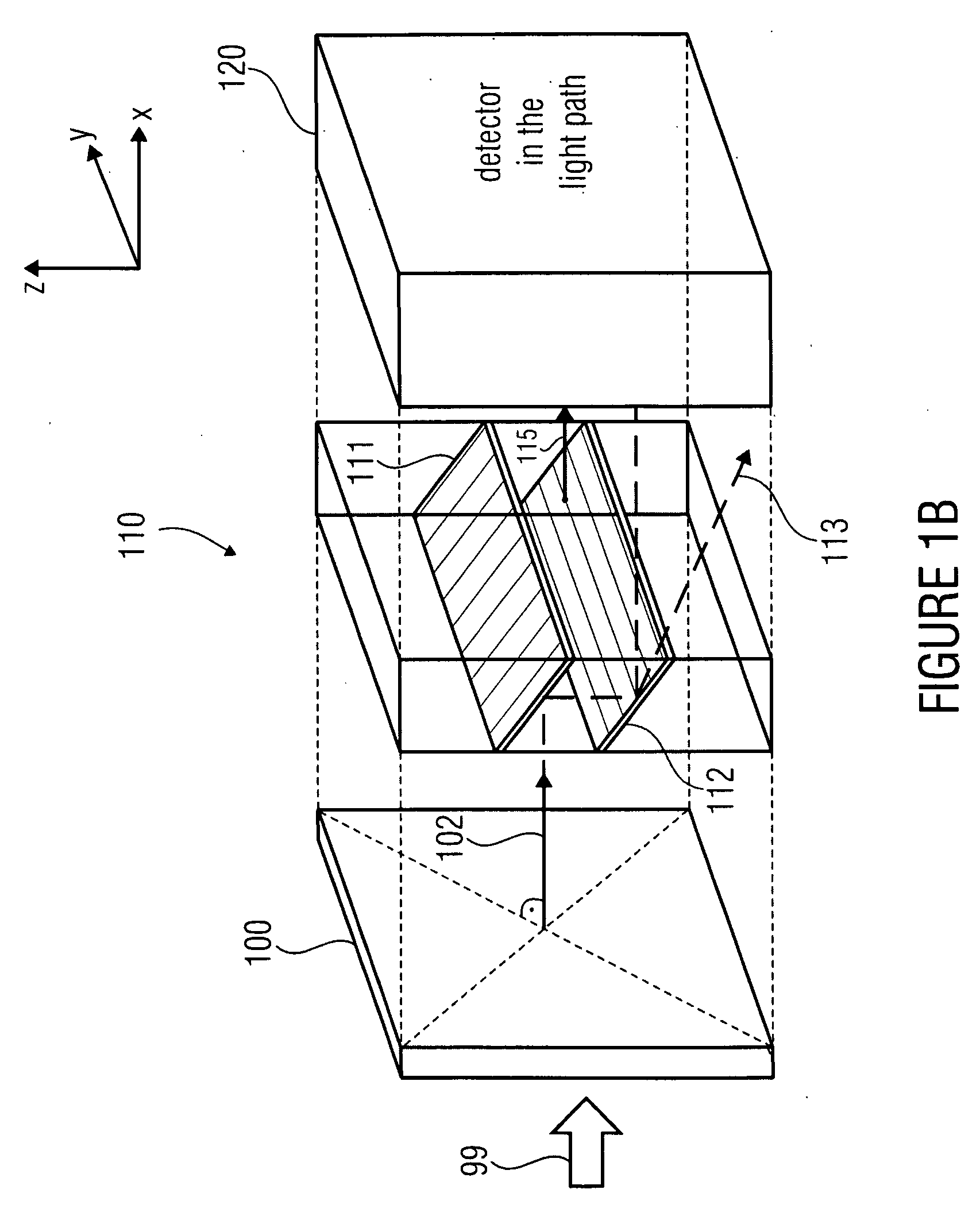Apparatus and method for detecting an image
- Summary
- Abstract
- Description
- Claims
- Application Information
AI Technical Summary
Benefits of technology
Problems solved by technology
Method used
Image
Examples
Embodiment Construction
[0038]FIG. 1a shows a schematic representation of the apparatus for detecting an image. The apparatus for detecting an image comprises a planar image source 100 and a mirror arrangement 110 for deflecting radiation which may be generated by the image source 100. The light radiation generated by the planar image source 100 is schematically depicted at 102. Thus, the mirror arrangement 110 receives the light radiation 102 at the input side, and outputs deflected light radiation 119 which will impinge on a detector 120. The detector is configured to receive the light, or the radiation, 119 deflected by the mirror arrangement 110. At the output side, the detector 120 may be connected to a computer 130, which outputs the image generated by the planar image source 100 via a monitor or a printer in the form of a printed copy (hard copy) or as a file (soft copy). Therefore, the device 140 may be a memory, a monitor, a printer or, e.g., a communication interface so as to transmit the image t...
PUM
| Property | Measurement | Unit |
|---|---|---|
| Fraction | aaaaa | aaaaa |
| Angle | aaaaa | aaaaa |
| Angle | aaaaa | aaaaa |
Abstract
Description
Claims
Application Information
 Login to View More
Login to View More - R&D
- Intellectual Property
- Life Sciences
- Materials
- Tech Scout
- Unparalleled Data Quality
- Higher Quality Content
- 60% Fewer Hallucinations
Browse by: Latest US Patents, China's latest patents, Technical Efficacy Thesaurus, Application Domain, Technology Topic, Popular Technical Reports.
© 2025 PatSnap. All rights reserved.Legal|Privacy policy|Modern Slavery Act Transparency Statement|Sitemap|About US| Contact US: help@patsnap.com



